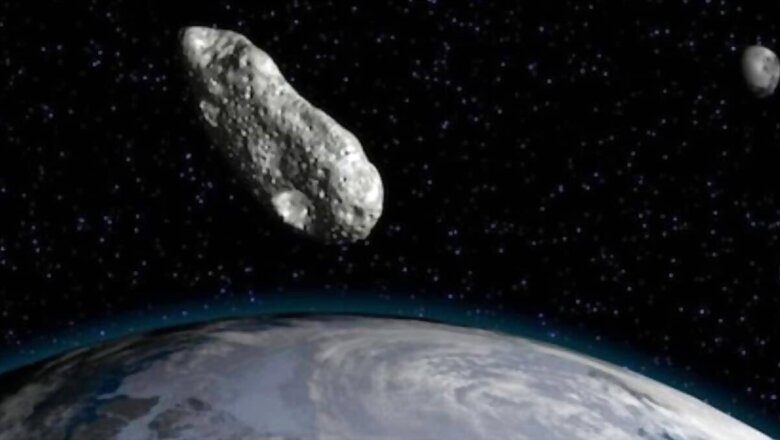
views
NASA has issued a cautionary alert regarding a giant asteroid approaching Earth. Set to zoom past our planet on October 18, this stadium-sized space rock, known as 2024 RV50, measures around 710 feet in diameter and is part of the Apollo family of asteroids. Discovered on September 1, it travels through its orbit around the Sun every 769 Earth days, or nearly 2.1 Earth years. NASA has confirmed that it poses no threat to Earth. The asteroid will pass at a distance of 386 million kilometres from the Sun, and come within 105 million kilometres of it.
Scientists are yet to determine the exact size of Asteroids 2024 RV50. It falls into the category of near-Earth objects, and its orbit places it alarmingly close to our planet, meaning a collision could result in significant damage.
To keep a close eye on this celestial body, NASA is utilising an advanced tracking system at its Jet Propulsion Laboratory (JPL). When 2024 RV50 makes its approach, it will pass Earth at a distance of approximately 7.42 million kilometres, travelling at a speed of 16 kilometres per second.
Following its current encounter, asteroid 2024 RV50 is expected to cross paths with Earth again on October 18, 2065. At that time, it will come even closer, within around 5.67 million kilometres of Earth. However, the likelihood of a collision even then remains negligible.
While it’s always alarming to see an asteroid approaching Earth — especially considering that nearly 66 million years ago, a catastrophic asteroid impact wiped out the dinosaurs and about 80 percent of life on our planet — the risk today is manageable. Thanks to advanced detection tools and monitoring systems, these celestial objects can be tracked with greater accuracy.
Asteroids, also known as minor planets, are thought to have formed from the leftover debris during the creation of the inner solar system. These rocky formations date back 4.6 billion years and vary in size and structure. Unlike planets, they lack an atmosphere, and many asteroids have remained unchanged since their early formation.
















Comments
0 comment